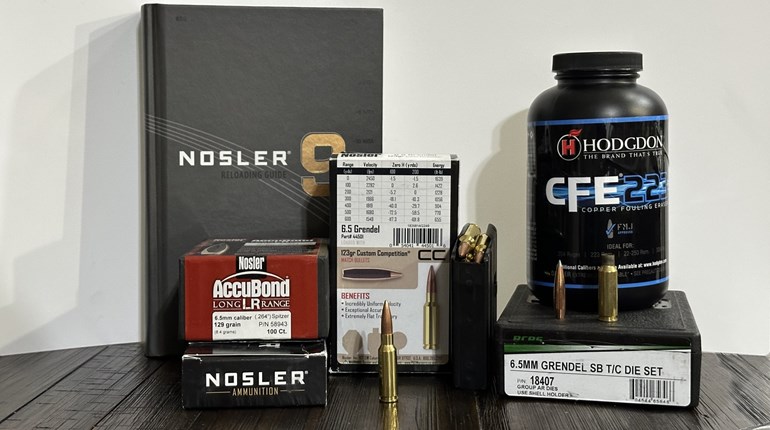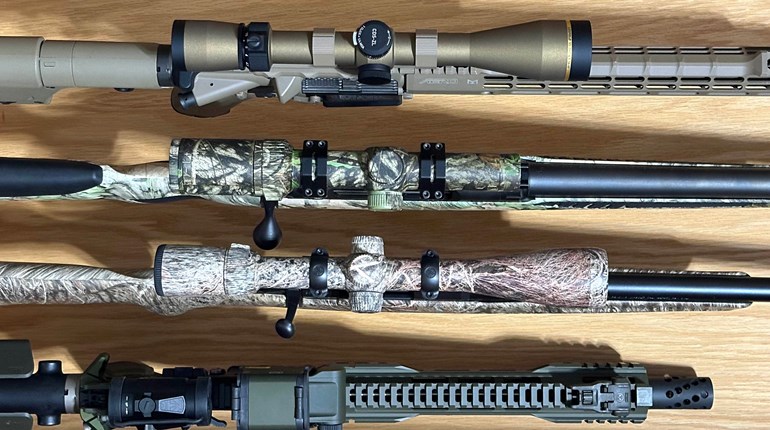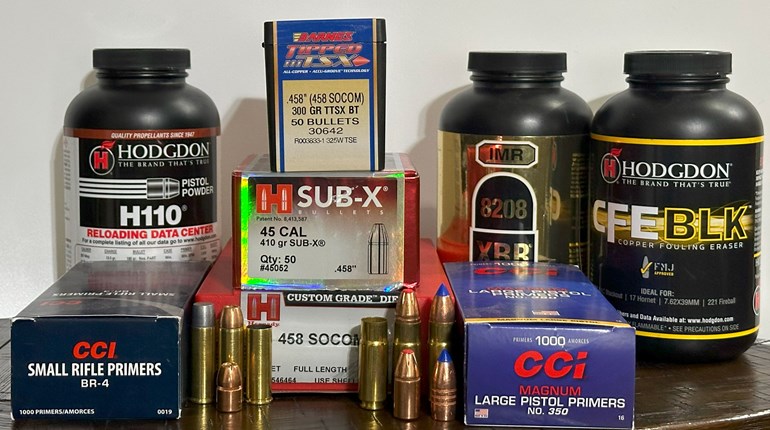
Revolvers make wonderful defensive and hunting firearms. That said, some people—myself included—find revolvers more difficult to shoot than semi-autos. One, the grip isn’t as natural as what we’ve become accustomed to from semi-automatics, largely due to the gun’s design. There’s no beavertail to help leverage recoil to keep the muzzle down and minimize muzzle rise in recoil, and there’s no slide cycling to mitigate rearward recoil. Further, many revolvers built for the express purpose of self-defense are smaller and lighter than target models, making them harder to control due to minimized weight and shorter measurements. So, what can be done to make shooting a defensive revolver less punishing? There are a few options.
A simple grip change can do a world of good.
No, I don’t mean the way you hold it (although that can help). Literally changing the grip can make a rough-recoiling gun more manageable. A new grip, like Hogue’s overmolded rubber Monogrip, can make a significant difference in how a gun shoots for you. Most of the time, a new grip is relatively easy to install, and they’re relatively inexpensive—especially when compared to a grip such as those made from wood. I’m not trashing wood grips, but you should know wood is a far less forgiving material when it comes to recoil impact on the hands. What’s more, some grips can greatly improve not just how the recoil feels, but also how the gun actually recoils, meaning how it moves in the hand upon firing. That means the shooter gets back on target faster, too.
A second way to reduce recoil is to change cartridges.
Unlike semi-autos that require a specific cartridge to be fired through a gun, many revolvers allow you to shoot bullets of the same diameter through a given bore size without the strict requirements for case dimensions. Okay, what do I mean by that? In theory, given the right equipment and cylinder design, a .460 S&W Magnum revolver could fire the following cartridges: .460 S&W Mag., .454 Casull, .45 Colt, and with a recessed cylinder and the right moonclip, .45 ACP. (Why that’s not yet been made is beyond me, but I think the concept is really cool.)
How could one gun do all this? Due to the way a revolver functions, all the pressure is contained within the cylinder. There are no springs that need to be compressed under recoil to time cycling properly; there are no stovepipe possibilities with soft-shooting loads. The only thing that needs to match is the projectile diameter to the barrel. Otherwise, no issues. All of the above cartridges fire the same .452-diameter bullet, so as long as the cartridge will fit in the cylinder and not exceed pressure ratings of the .460 S&W, all is well with the world, and no gun will be destroyed. Now that’s big-bore revolvers. Scale this down, and in theory, even 9mm revolvers could fire .380 ACP ammo, as each bullet is .355 diameter (the British call the .380 ACP “9mm Short” for a reason).
Important note: If you are going to regularly shoot shorter cartridges in revolvers chambered for cartridges with larger case capacity, the cylinder needs cleaned regularly to ensure no carbon builds up on the front end of the cylinder, where the larger cartridge might regularly be seated. This is a safety issue. What can happen is carbon from burned powder cakes up on the cylinder wall, and that causes more friction for the bullet to overcome when leaving the cartridge upon firing, leading to a pressure spike. That’s when things can get dangerous. But other than that small bit of periodic extra cleaning? No harm, no foul. (See what I did there?)
Try handloading.
If shooting smaller cases to mitigate recoil is your jam, and you want to cut recoil even further, handloading could be your best bet. By shooting lighter bullets, lighter charges or both, recoil can be reduced significantly in smaller cartridges. Let’s use our 9mm/.380 ACP example here again. Per Hodgdon’s website, a hot 9mm+P load using a 147-grain bullet has a max load of 6.7 grains of Accurate No. 7 powder. Recoil wise, out of a 24-ounce 9mm Taurus revolver, this equates to about 7.25 ft.-lbs. of recoil coming back on the shooter’s hands.
However, using Hodgdon’s data for .380, and finding the softest load we can by using the lightest bullet with the lightest powder charge, which is a 56-grain bullet over 3.1 grains of Hodgdon Titegroup, the gun only produces about 1.25 ft.-lbs. of energy into the shooter’s hands. In other words, the shooter is only experiencing 20% of the recoil of a full-house 9mm load. Even stepping up to a 90-grain bullet (note that many bullets made for self-defense weigh in at 90-grains for .380 ACP ammo), and using the minimum charge of 2.7 grains of Hodgdon Titegroup for that bullet weight, that same gun only produces roughly just over a quarter of a pound more recoil (approximately 1.6 ft.-lbs.) into the shooter’s hands, and that bullet is still going over 800 fps, which is nothing to scoff at.
Gain some weight … doctor’s orders.
Another way to cut recoil even further is by adding weight to a gun. Typically, this is done using a longer barrel, or by buying a gun with a larger frame to include a larger cylinder, longer barrel and usually a longer grip. Yes, that cuts the concealability of a revolver considerably, but there are ways to hide larger guns. Using the same data above to replicate those same loads out of a Taylor and Co TC9 revolver – which weighs 40 ounces, nearly double that of the Taurus – the .380 ACP load lightest load produces a mere .75 ft.-lbs. of recoil. Talk about minimal recoil.
Changing grips, cartridges and loads, and the gun’s overall size and weight can make any revolver easier to shoot, which in turn promotes practicing with them because shooting revolvers is all the more enjoyable. And because practice makes perfect, once you develop the fundamentals of shooting a revolver well and increase your comfort using them, things can be done to increase your proficiency with the gun. All of that builds confidence and skill, which is key when carrying any firearm, especially a wheelgun for self-defense.






































